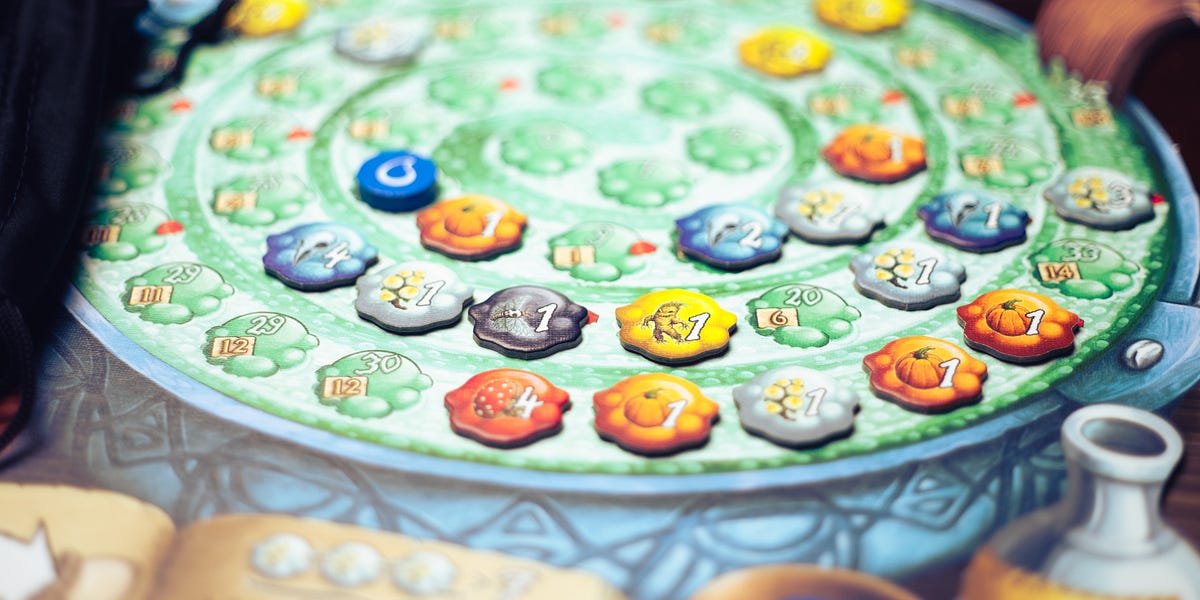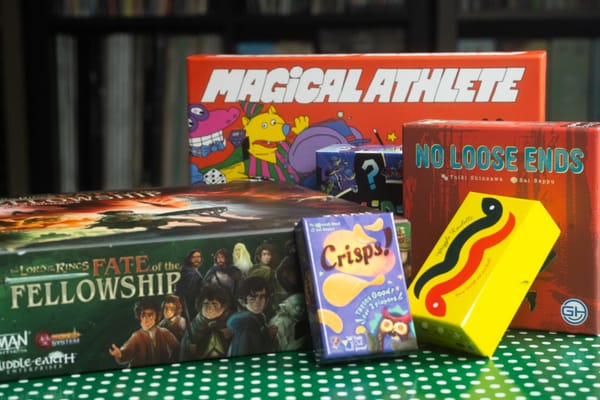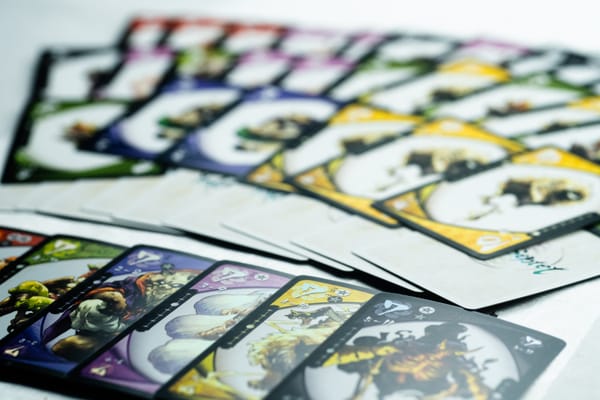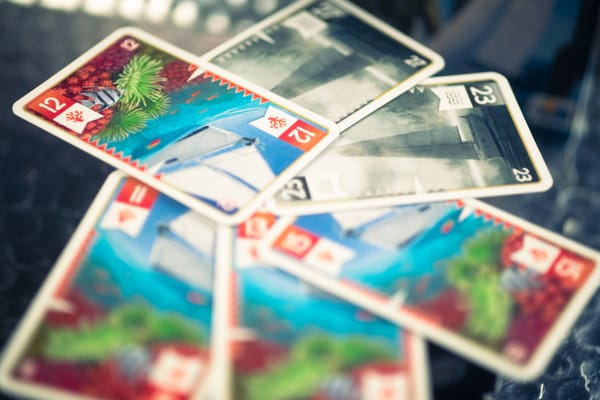Four modern board games to introduce to new gamers
Introducing new games comes with a measure of responsibility.

There’s nothing quite like a game night with new gamers, with people that are not yet into games but are interested in learning more. It’s an interesting thing, because it puts you in a position of wanting to provide not just a fun experience, but a smooth one.
When I’m hosting new gamers, I want to bring games to the table that don’t weigh players down with long rules explanations. I want games that give players an opportunity to succeed, even if they haven’t played the game before. I want games that expand their perspective on what games can be. I want games that evoke classic ideas and themes but with a fresh perspective.
When my friend Scott brought The Settlers of Catan (Teuber, 1995) in his luggage during a visit, it opened up my eyes to a world of gaming. This isn’t about Catan — I’ve already written about games to replace Catan in my Replacing the Classics series — but it’s about what made it a great game for Scott to bring. He didn’t hype the game before he brought it; I had no idea he had packed it until he broke it out in the basement I shared with a friend back in college. I don’t remember how well I did at the game, though I’d imagine I didn’t win. I don’t remember how long it took to explain the rules, only that it didn’t take long. I do remember the chunky bits of wood, the hexagonal tiles, and the starting position draft. I remember when I first really figured out how to make a port work with my strategy. I remember building a city and feeling both the power and the risk of having a lot of cards in my hand.
My story isn’t unique among gamers. It’s personal, but it’s not unique. I’d bet that plenty of you reading this got your start with something like Catan, if not Catan itself. That experience still guides my decision-making today, even when I’m playing with established gamers. Much of my play today outside the home isn’t with established gamers, and that’s both a privilege and a challenge — one I hope I’m up for.
Four newer games
We’re going to start with what’s likely the simplest game in the mix: Magical Athlete (Ishida and Garfield, 2025) is a racing game. At its core, is a classic roll-and-move racer, and your strategic decisions are generally minimal. That hasn’t stopped it from being a wildly entertaining game, and that’s for two major reasons. First, each racer has a power that impacts the game in significant and weird ways, and you’ll be drafting four of them, one to use in each round. You might trip other players up, or you might give everyone (and especially yourself) a bit of a boost. Second, there are so many different racers. A ton. And each one has a wooden meeple. They’re not small meeples. They’re all screen-printed.
If you wanted to show somebody that board games have evolved over the last 50 years, Magical Athlete will provide you that opportunity — and it’ll look like a game that could’ve been released 50 years ago, too. The art direction here is phenomenal, and that’s particularly important for a game without a ton of strategic decisions.
Originally designed by Takashi Ishida in 2003 and expanded in 2025 by Richard Garfield, illustrated by Angela Kirkwood, and published by CMYK.
You’ll also want to introduce a party game: ito (326, 2019) is a party game, but it’s a cooperative party game, and it’s more in the vein of Wavelength (Hague, Vickers and Warsch, 2019) than, say, Taboo (Hersch, 1989) or Pictionary (Angel, 1985). The premise is fairly simple: Each round will feature a prompt featuring two extremes on a scale (best and worst breakfast foods, for a quick example), and players will be dealt a number card that represents the position on the scale they’ll be representing. A 100 answer might be “cold cereal,” because you can’t really get more breakfast-coded than that. A 0 answer might be “a shoe,” because eating a shoe for breakfast doesn’t seem quite right. You might disagree, though I suspect not, with these two examples, at least relative to each other.
The twist is that, of course, you’re given a number card, and your answer has to put you in the right position relative to everyone else playing. The game does get harder with more players, but it also gets a bit more specific and a lot weirder. I like that.
Designed by 326, illustrated in the most recent English edition by Nadia Carrim, and published in English by Arcane Wonders.

Newer games don’t have to be wholly original in their designs. See The Gang (Cooper and Heath, 2024), a cooperative game in which players are cooperatively evaluating poker hands in the style of Texas Hold’em. You’ll start with just two cards, then you’ll work your way through five shared cards. Through each step of the process, you’ll all be trying to figure out who has the best hand, who has the worst, and where each player sits between those two ends.
It really is cooperative poker, and it really does work. You wouldn’t necessarily expect that, I think, mostly because poker has been around for, well, longer than any of us have been alive. This is a great illustration of modern gaming taking established ideas and turning them into something new and inventive. It’s a great illustration of the idea that modern party games aren’t all crude clones of Apples to Apples (Kirby and Osterhaus, 1999) — and that might just surprise some people.
Designed by John Cooper and Kory Heath, illustrated by Fiore GmbH, and published by KOSMOS.

We’ll turn now toward games with a bit more strategy and weight, though as we discussed at the beginning, we’re not going to focus on deeply strategic games here. River Valley Glassworks (Hill, Pinchback and Riddle) is a drafting game in which you’re collecting pieces of glass as they move down a river. You’ll place the glass you collect on a grid, with each color you collect occupying a column on that grid. Your fullest columns will earn you points, and you’ll earn points for each complete row. Each turn in River Valley Glassworks is simple, but a well-planned selection of glass will take strategy.
Designed by Adam Hill, Ben Pinchback and Matt Riddle; illustrated by Andrew Bowley; and published by Allplay.
River Valley Glassworks is one of many games that exist in the Azul-like (Kiesling, 2017) world, many of which would be good options for newer gamers. Harmonies (Benvuneto, 2024) has players building patterns using colored discs, Verdant (Johnson, Melvin, Mesburne, Russ and Stankewich, 2022) has players playing plants in a grid, Sagrada (Adamescu and Andrews, 2017) has players drafting colored dice as they build a stained glass window, and there many other interesting colorful abstract games to explore, too.

Well, this isn’t a wholly encapsulating list, and it’s one I’d like to revisit soon with some further recommendations. Maybe I'll write about Azul-likes, too. Time will tell! I’m also looking forward to another piece I’ve got planned — older games to introduce to folks who are just getting excited about the hobby. I think I’ll need another week to at least think of a better title, though.
And hey, thanks for reading this week’s issue of Don’t Eat the Meeples! I know it’s come out a day late, and I don’t really have any reason for that aside from having gone to bed at a reasonable hour on Tuesday. It’s a rare thing for me, I know.







